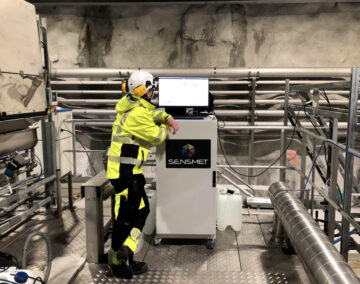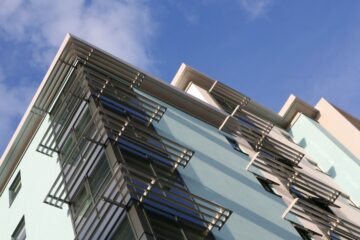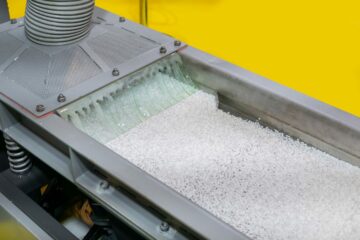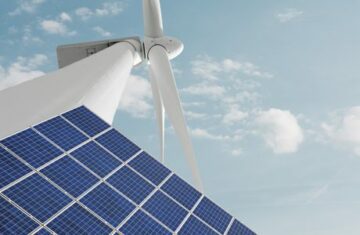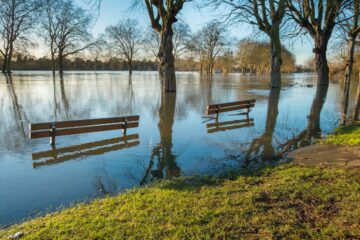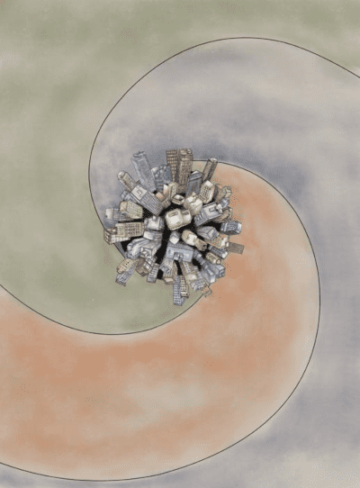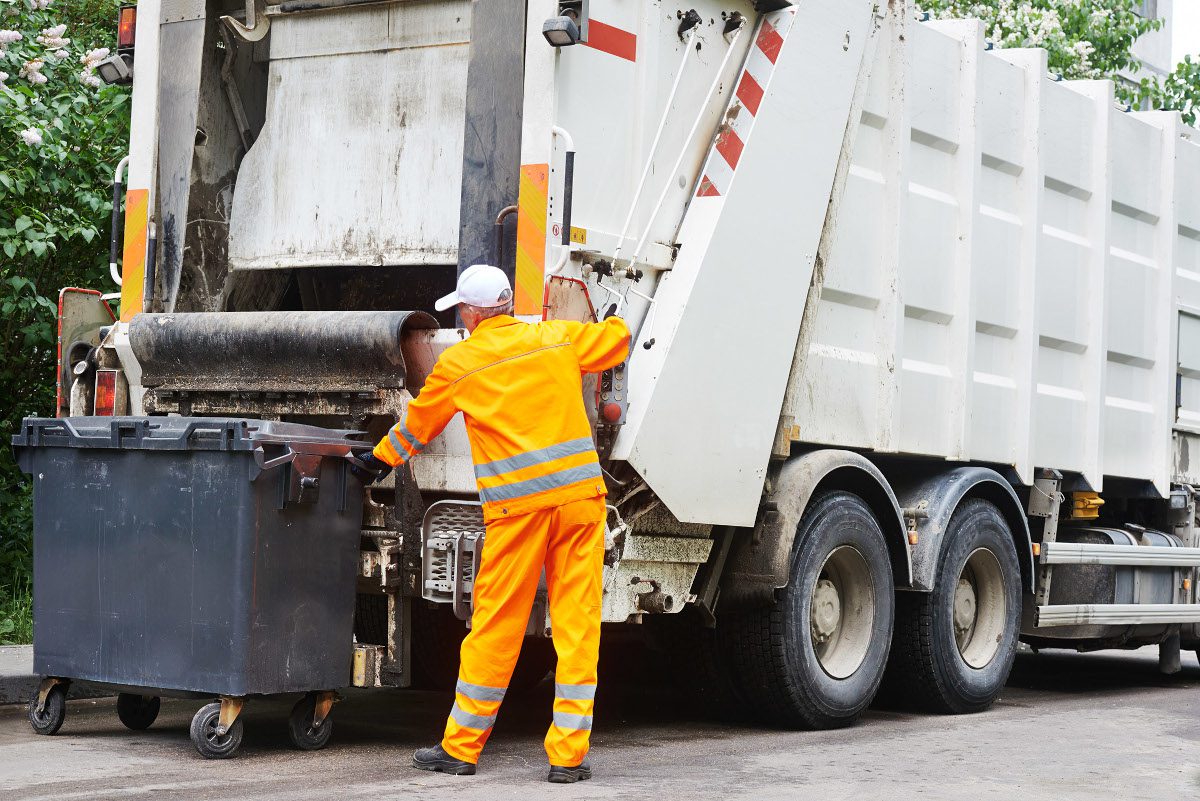
Researchers analyzed solutions implemented in four very different Brazilian cities. Based on the results, they propose the creation of a national carbon credit fund to support sustainable waste management initiatives.
Some 20,000 metric tons of municipal solid waste (MSW) are produced every day in metropolitan São Paulo, with household trash accounting for 12,000 tons and street cleaning (mainly sweeping, open-air market refuse collection, pruning and grass cutting) for 8,000 tons. This amount of household trash corresponds to about 1 kg per inhabitant per day.
The national composition of MSW is 50% organic matter, 35% recyclables and 15% landfill refuse. Efficient MSW management, with processing of organic waste to produce fertilizer and biogas, effective recycling of recyclables, and creative solutions to use part of the landfill refuse, would reduce Brazil’s greenhouse gas emissions and serve as an additional source of revenue via the circular economy, which converts waste into resources. However, the rate of MSW reuse is still very low in Brazil (2.2%).
“Improvements such as implementation of technologies that integrate composting, recycling and use of methane from landfills to produce bioenergy could reduce the emissions from MSW management systems by 6%, as a highly conservative estimate, or 70% more optimistically,” said Michel Xocaira Paes, a researcher at Getúlio Vargas Foundation (FGV) in São Paulo. “That would correspond to between 4.9 million and 57.2 million metric tons of CO2 equivalent, for annual economic benefits of USD 44 million to USD 687 million in carbon credits.”
He told the news agency Agência FAPESP: “We studied MSW management in six Brazilian cities, four of which we selected to exemplify different routes to innovation in this area: Harmonia, São Paulo, Ibertioga and Carauari. They are all very different in terms of geographical region, size, population and Human Development Index (HDI), among other criteria. Their MSW management systems are also different, but each one has at least one highly interesting innovation.”
Harmonia and Ibertioga have very high rates of waste reuse (56% and 67% respectively). Harmonia, which is located in the state of Rio Grande do Sul in the South region, also features domestic composting, and diverts almost half its organic waste from MSW collection and treatment systems. However, whereas MSW is managed by private enterprise in Harmonia, with a strong emphasis on environmental education and social participation in separating types of waste and in domestic composting for organic food production, MSW management in Ibertioga, Minas Gerais state, is entirely public. The researchers found the governance of its local MSW management system to be robust and noted significant support from the state government for the implementation of sorting and composting units across the state. The results have been very positive in both cases.
São Paulo, the capital of São Paulo state in the Southeast, and Carauari in Amazonas, a state in the North, are worlds apart. São Paulo is the fifth most populous metropolitan area in the world, and half its population lives in São Paulo city. Everything there is huge, including the problems and their solutions.
“Waste reuse in São Paulo is better than the national average but still very low at only 3%,” Paes said. “On the other hand, there are many innovations, such as strong participation by recycling collector co-ops, two material recovery facilities to separate recyclables, organic waste composting units, and power co-generation from landfill methane.”
São Paulo has three sanitary landfills. Two are privately owned, and a third operates as a state concession. The world’s third-largest sanitary landfill, in Caieiras, receives MSW from the northwestern area of the city, the CTL landfill receives MSW from the southeastern area, and the Pedreira landfill receives only street cleaning waste.
The Caieiras landfill has a biogas-fueled thermal power plant, where methane (CH4) from decomposing organic matter drives electricity generators. CTL burns some of its CH4 to produce CO2 and steam (since CH4 has 21 times the global warming potential of CO2) and sends the rest to a thermal power plant with which it partners. In 2019, when the study was conducted, these two landfills had installed capacities of 8 megawatts (MW) and 29 MW respectively.
Another important innovation is the installation of 125 collection points across the city. These are known as “ecopoints” and receive not just recyclables (paper, cardboard, plastic, glass and metal) but also trimmings from household plants and trees, construction debris, and larger objects such as old furniture.
“The city also partners with associations of recyclable collectors, who do some separating and partial processing. In 2019, it had 24 co-ops with some 900 workers all told, as well as 1,400 self-employed collectors registered with the relevant municipal department,” Paes explained.
Besides the innovations mentioned in the article, new initiatives have appeared in the city. These are relatively small-scale but can be replicated. For example, Realixo is a firm set up by young university graduates to promote environmental conservation, the circular economy and sustainability. Customers pay a monthly subscription to have their organic and recyclable waste collected by the firm, which separates what it can send to partners for composting or recycling.
At the opposite extreme of the urban spectrum, Carauari has 28,000 inhabitants – 21,500 in the urban area and 6,500 in the rural area and forest. It is located on the Juruá River and is five days away by boat or two hours by plane from Manaus, the state capital. “These distances are misleading. I didn’t find an abandoned population there. On the contrary, they’re highly organized, empowered, and engaged in community management of natural resources, bioeconomy and circular economy initiatives, and sustainability policies. Local associations and groups do a great deal, in partnership with NGOs, universities, government and private enterprise,” Paes said.
A separate article on the study conducted in Carauari was published in Springer Nature’s journal Urban Sustainability, with detailed information on the activities of local communities, mainly Arapaima gigas fishery management and oilseed processing, all of which is integrated in a circular economy, so that waste from one activity becomes inputs for another instead of impacting the environment (read more at: agencia.fapesp.br/36780).
Oilseed hulls are composted, and almost all the arapaima (the giant fish also known as pirarucu) is used, with the viscera being ground up to make feed for turtles, the scales supplying material for jewelry, and the skin going into handcrafted bags, clothing and footwear.
“There’s no such thing as a magic wand to solve the waste problem, but in these four cities we found good practices that can be synthesized in a wide-ranging project with four pillars: local technical and political capacity; environmental education and social participation; collaboration among all three tiers of government [federal, state and municipal]; and local partnerships for innovation,” Paes said.
“From these pillars we derived the proposal to create a national carbon credit fund that would be managed by the federal government with participation by states and municipalities. This fund could be used to support waste reduction initiatives [via domestic composting, for example], conversion of waste into resources via the circular economy, and development and implementation of local technologies for composting, recycling and use of landfill biomethane. All this would help reduce greenhouse gas emissions and stimulate the low-carbon circular economy. It’s a model that can be used throughout Brazil and inspire similar solutions in the other BRICS and developing countries in Latin America, Africa and Asia.”
An article about the study has been published in the journal Habitat International.
The research was funded by FAPESP via a postdoctoral scholarship and via a project coordinated by José Antonio Puppim de Oliveira, a professor at FGV and supervisor of his postdoctoral research.
- SEO Powered Content & PR Distribution. Get Amplified Today.
- PlatoData.Network Vertical Generative Ai. Empower Yourself. Access Here.
- PlatoAiStream. Web3 Intelligence. Knowledge Amplified. Access Here.
- PlatoESG. Carbon, CleanTech, Energy, Environment, Solar, Waste Management. Access Here.
- PlatoHealth. Biotech and Clinical Trials Intelligence. Access Here.
- Source: https://envirotecmagazine.com/2024/03/26/brazilian-study-suggests-better-ways-of-managing-msw/
- :has
- :is
- :not
- :where
- $UP
- 000
- 1
- 12
- 125
- 15%
- 2%
- 20
- 2019
- 21
- 24
- 28
- 29
- 35%
- 4
- 400
- 500
- 6
- 8
- 9
- 900
- a
- About
- Accounting
- across
- activities
- activity
- Additional
- africa
- agency
- All
- almost
- also
- america
- among
- amount
- an
- analyzed
- and
- annual
- Another
- apart
- appeared
- ARE
- AREA
- article
- AS
- asia
- associations
- At
- average
- away
- bags
- banner
- banners
- based
- BE
- becomes
- been
- being
- benefits
- Better
- between
- biogas
- boat
- both
- Brazil
- Brazilian
- brics
- burns
- but
- by
- CAN
- capacities
- Capacity
- capital
- carbon
- carbon credits
- cases
- circular
- circular economy
- Cities
- City
- Cleaning
- click
- Clothing
- collaboration
- collected
- collection
- collector
- collectors
- COM
- Communities
- community
- composition
- conducted
- CONSERVATION
- conservative
- construction
- content
- contrary
- Conversion
- converts
- coordinated
- correspond
- corresponds
- could
- countries
- create
- creation
- Creative
- credit
- Credits
- criteria
- Customers
- cutting
- data
- day
- Days
- de
- deal
- decomposing
- Department
- Derived
- detailed
- developing
- Developing Countries
- Development
- different
- digital
- disabled
- do
- Domestic
- drives
- each
- Economic
- economy
- edition
- Education
- Effective
- efficient
- either
- electricity
- Emissions
- emphasis
- empowered
- engaged
- Enterprise
- entirely
- Environment
- environmental
- Envirotec
- Equivalent
- estimate
- Ether (ETH)
- Event
- Every
- every day
- everything
- example
- explained
- extreme
- facilities
- Features
- Federal
- Federal government
- fertilizer
- fifth
- Find
- Firm
- Fish
- five
- food
- For
- forest
- found
- Foundation
- four
- from
- fund
- funded
- GAS
- generators
- geographical
- giant
- glass
- Global
- global warming
- going
- good
- governance
- Government
- grass
- great
- greenhouse gas
- Greenhouse gas emissions
- Ground
- Group’s
- had
- Half
- hand
- handcrafted
- Have
- help
- High
- highly
- his
- HOURS
- household
- However
- HTTPS
- huge
- human
- i
- image
- impacting
- implementation
- implemented
- important
- in
- Including
- index
- information
- inhabitants
- initiatives
- Innovation
- innovations
- inputs
- inspire
- installation
- installed
- instead
- integrate
- integrated
- interesting
- into
- IT
- ITS
- jewelry
- jpg
- just
- known
- larger
- Latin
- latin america
- least
- Lives
- local
- located
- Low
- low-carbon
- magic
- mainly
- make
- managed
- management
- management system
- managing
- many
- Market
- material
- Matter
- mentioned
- metal
- methane
- metric
- million
- misleading
- model
- monthly
- monthly subscription
- more
- most
- municipal
- Municipalities
- National
- Natural
- Nature
- New
- news
- NGOs
- no
- None
- North
- noted
- objects
- of
- Old
- on
- ONE
- only
- operates
- opposite
- or
- organic
- Organized
- Other
- owned
- Paper
- part
- partial
- participation
- partners
- Partnership
- partnerships
- Pay
- per
- pillars
- Pixel
- plane
- plant
- plants
- plastic
- plato
- Plato Data Intelligence
- PlatoData
- points
- policies
- political
- population
- positive
- potential
- power
- practices
- private
- Problem
- problems
- processing
- produce
- Produced
- Production
- Professor
- project
- promote
- proposal
- propose
- public
- qualified
- Rate
- Rates
- receive
- receives
- recovery
- recycling
- reduce
- reduction
- region
- registered
- relatively
- relevant
- replicated
- research
- researcher
- researchers
- Resources
- REST
- Results
- reuse
- revenue
- River
- robust
- routes
- Rural
- Said
- scales
- selected
- send
- sends
- separate
- separating
- serve
- set
- sign
- significant
- similar
- since
- SIX
- Size
- Skin
- So
- Social
- solid
- Solutions
- SOLVE
- some
- Source
- South
- southeast
- Spectrum
- State
- States
- Steam
- Still
- stimulate
- street
- strong
- studied
- Study
- subscription
- such
- Suggests
- supplying
- support
- Sustainability
- sustainable
- system
- Systems
- Technical
- Technologies
- terms
- than
- that
- The
- The Capital
- The State
- the world
- their
- There.
- thermal
- These
- they
- thing
- Third
- this
- three
- throughout
- times
- to
- told
- tons
- trash
- treatment
- Trees
- two
- types
- units
- Universities
- university
- urban
- USD
- use
- used
- vargas
- very
- via
- wand
- was
- Waste
- ways
- we
- WELL
- What
- when
- whereas
- which
- WHO
- with
- workers
- world
- world’s
- would
- young
- zephyrnet


